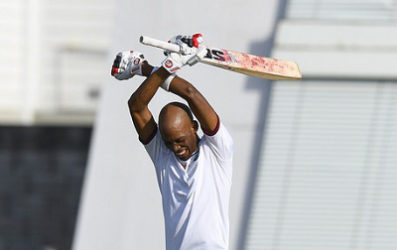By Rudi Webster
For more than 15 years the West Indies cricket team has been trapped in a failure spiral in which they fail, expect to fail and fail again. Once champions of the world, and one of the better teams in the history of sport, they have been languishing at the bottom of the Test and One Day rankings for some time, not for lack of fitness or talent but poor self-belief, weak concentration, inadequate motivation and self-discipline and a negative self-image.
Once players get the basics right performance usually revolves around these things rather than around potential.
The players’ self-belief and self-image cause them to think, behave and perform like the players they imagine themselves to be. Their self-image is a subconscious picture they have of themselves – who they are, what they are and how good they are. And that picture is reflected in the way they think and talk to themselves.
Every player has a baseline self-image that determines how well he selects and uses his talent. It is like a sensor or thermostat that regulates performance. Adjusting the level of that thermostat changes the quality of the player’s performance. If he raises the level by improving self-image and self-belief, performance usually improves. And if he lowers it, performance suffers.

When players have a good game and performance exceeds expectations and normal standards they go into the next game expecting to do well and repeat that performance. But their subconscious sensor detects a deviation from normal and self-corrects downward. Their mind might then say, “That’s not like you. You know you are not that good. Correct yourself and get back to where you belong.” Performance will then go back to its normal level. And when teams perform poorly, the players’ minds might say, “C’mon, that’s not like you. You are better than this.” They might then self-correct upward, lift performance, and might even win a game, leaving everyone thinking, “Why don’t they play like that more often?”
Players with low self-image who are used to losing sometimes get into winning positions and then blow their chances by doing stupid things and making basic mistakes. And when they are asked why they lost they usually cannot give a good reason and often confess that they cannot make any sense of what happened. Consciously, it doesn’t make any sense to them, but subconsciously it makes perfectly good sense because their performance maintains and reinforces the limiting self-image in their mind.
In 2011, after losing two close Test matches against India that they could have won, Harsha Bogle, an Indian journalist wrote: “West Indies played their role of the challenger quite well but you always knew it was a question of when, rather than if, they would fall away. West Indies need someone on the field to show them how to win, for at the moment they give the impression it is out of bounds. Sometimes when you fear (or expect) the inevitable, you invite it. There is much promise in this side but it is on a long downward spiral, and the new talent coming in will take the shape of the mould it is cast into. It is the mould, the air they breathe, and the acceptance of defeat that need to be demolished.”
Perhaps Roston Chase could fit the mould of the player who can show the other players how to fight and be competitive and eventually how to get back to winning ways.
Since 2011, the West Indies team has been unable to break out of that confining and losing mould because their internal sensor is aligned to a losing self-image. But as soon as they readjust their sensor by enhancing self-image and self-belief their concentration, self-discipline and self-motivation will automatically improve and they will break out of their failure spiral.
These are significant changes that Worrell and Lloyd were able to make in their champion teams; changes that were to a large measure responsible for their team’s success and world dominance.
The coaches, specialists and players in the West Indies team have not yet learnt these lessons. The quality of a player’s performance at the highest level of sport usually revolves around his self-image as well as the depth of his self-discipline and self-motivation. There is more to performance that fitness and technique. These two things are extremely important but they should be the servants not the masters of the game. The body depends on the brain for instructions and direction for every action that it takes.
Players and selectors are often obsessed with past averages and statistics but these averages only measure what players have learned and done, not what they can learn and become. Players who base their worth solely on those figures and accept them as the truth about themselves will behave like the players they believe themselves to be. As long as West Indies players hold on to negative self-beliefs, they will remain trapped in their failure spiral. To break free they must change self-image and self-beliefs, stop thinking about what they have been and start thinking about and imagining what they can become.
As Emile Coue, a French chemist once said, “Imagery might be the highest form of mental energy. Reason (and logic) can analyse and organise but only the imagination can create the future.”








